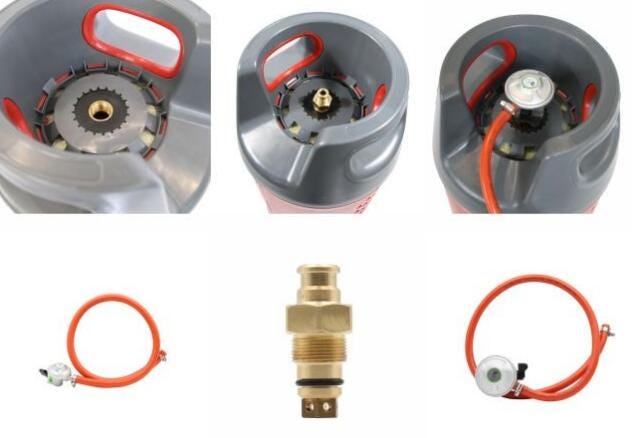Something you need to know about LPG cylinder
Liquefied Petroleum Gas (LPG) cylinders
LPG cylinders are containers in which propane and butane are mixed in certain amounts so they can be used as fuel for a variety of applications. LPG cylinders are used in many workplaces for cooking, heating, cutting and refueling vehicles such as forklifts.

What are LPG cylinders made of?
According to the Bureau of Indian Standards, LPG cylinders are made of carbon steel. Wall thickness is a major aspect to consider when designing a cylinder. The factors that affect the wall thickness are: the ratio of the diameter of the round top to the height, the shape of the cylinder dome, the cylinder test pressure, cylinder outer diameter, joint radius, straight flange length, material yield strength, disc radius, the welding seam factor.
Why are most LPG cylinders red?
The color red is known to have the highest wavelength in the visible spectrum, so it can be seen from a great distance. It is a color usually associated with any flammable material. However, cylinders (especially non-commercial cylinders) are painted Oxford Blue with a 4" band of red in the middle of the cylinder. This is done as the cylinder stops turning.
What is the stress in the cylinder?
LPG cylinders are thin pressure vessels. When the cylinder is filled with LPG, a pressure of 12–18 bar is generated inside the LPG cylinder. Due to the pressure in the cylinder, stresses are generated. They are of two types: circumferential stresses and longitudinal stresses. Both are tensile stresses. During the analysis, it is often found that circumferential stresses are usually greater than longitudinal stresses. Therefore, circumferential stresses are the main principal stresses and are often attributed to cylinder failure.
Why is the weld on the cylinder circumferential?
Circumferential stresses are the primary principal stresses and longitudinal stresses are the secondary principal stresses. If the primary principal stresses exceed the strength of the material, there is a risk of failure. Therefore, we need to keep it to a minimum.
If we weld longitudinally, the circumferential stresses will rise. On the other hand, if we weld indirectly, the longitudinal stresses will rise. We can tolerate the rise in longitudinal stress because it is a secondary primary stress. A rise in circumferential stress can lead to failure. Therefore, the weld finish is circumferential.
